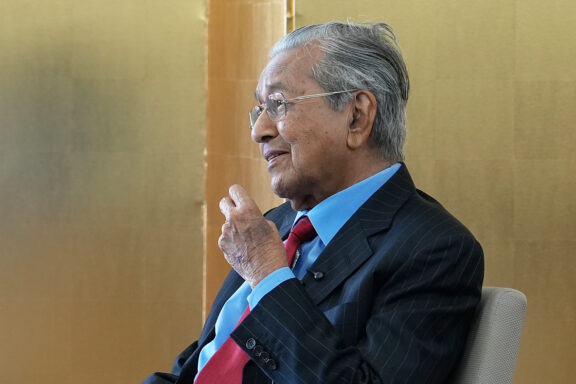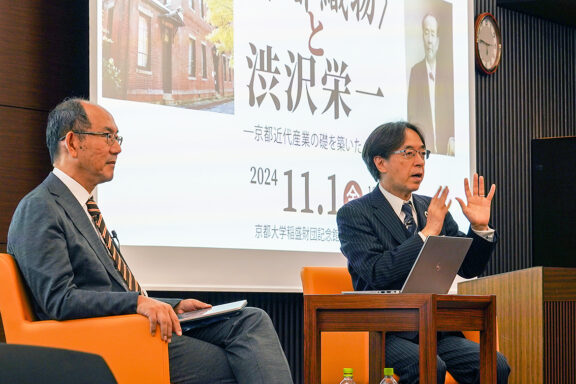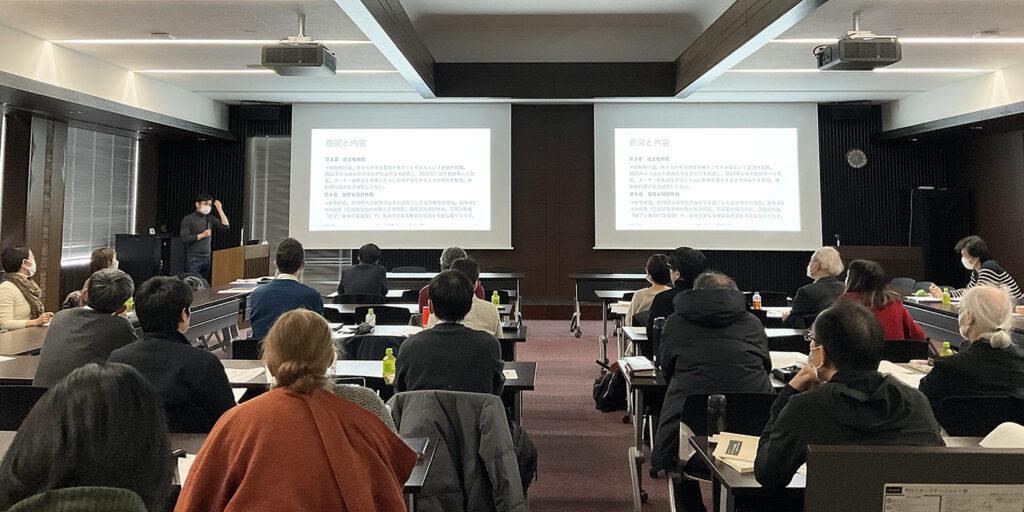
On January 28, 2023, CSEAS hosted a book review symposium on two Japanese-language books by Associate Professor Dr. Yoshihiro Nakanishi, “Rohingya” Crisis: The Violent Politics of Ethnicity and Religion in Myanmar (Chuokoron Shinsha, 2021) and Contemporary Myanmar Politics (Iwanami Shoten, 2022). The author provided some background and commentary, which were followed by detailed readings from four up-and-coming researchers. Nearly 40 people from across Japan attended the event in Kyoto, where the snow had fallen the day before. The following summary of the event is provided by Dr. Kanae Kawamoto, a JSPS Postdoctoral Research Fellow of the Institute for Advanced Studies on Asia, The University of Tokyo.
The event was supported by:
JSPS Grant-in-Aid for Scientific Research (B) “De-territorialization of International Regime and Nation-State Backlash: A Case of Northern Rakhine Crisis” (principal investigator: Yoshihiro Nakanishi) and Grant-in-Aid for Scientific Research (A) “Globalization of Majoritarian Democracy: Comparative Study of Asia and Africa” (principal investigator: Kazuya Nakamizo)
Background to the publication of the two books
Following large-scale conflicts between Rohingya Muslims and Buddhists in Rakhine State in 2012, the term “Rohingya” was frequently mentioned in international news and began to reach Japan. A new wave of violence in 2017 — after Myanmar’s transition to quasi-civilian rule — caused hundreds of thousands of Rohingya to flee to neighboring Bangladesh as refugees. While Myanmar’s domestic media fueled negative images of a “radical terrorist insurgency” sparking the violence, outside the country, the United Nations Human Rights Council (UNHRC) launched an investigation of the situation. Shortly after Aung San Suu Kyi’s appointment as State Counsellor, her non-cooperative stance toward the investigation invited criticism.
Despite increased media attention, it remained unclear what “Rohingya” meant and in what context it was used. Information on the actual number of refugees, who had committed acts of violence and how, and which villages had been attacked, was also cobbled together and chaotic. There was a large gap between the understanding of Burmese researchers, who had access to local information, and the public, who did not. Against this backdrop, “Rohingya” Crisis made a significant contribution by deciphering the reports published by both the UNHRC and the Myanmar Government between 2017 and 2018, as well as compiling and analyzing information collected online and in the field.
The media, not only in Japan but also around the world, considered the “Rohingya” a refugee problem, and humanitarian assistance was the focus of most discussion. As many Rohingya continue to live in refugee camps, their focus is of course essential. However, “Rohingya” Crisis is groundbreaking in that it examines why the conflicts occurred, providing a chronological analysis of long-, medium-, and short-term factors. In the long-term analysis, Nakanishi elucidates the positioning of Muslims in northern Rakhine and the formation of Burmese nationalism in the context of human migration and social and economic changes in British colonial India. The mid-term analysis describes how Muslims in northern Rakhine were suppressed and deemed stateless as the military regime took advantage of a growing national consciousness associated with the formation of a centralized state. From a short-term perspective, Nakanishi touches on how the liberalization of society in the process of the transition to semi-civil administration opened new opportunities for violence, including that stemming from ethnic and religious conflicts.
The book was a first attempt to converge this entire history into a compact primer and was published in January 2021, just ten days before the coup. In the same year, the book was awarded the Junzo Kashiyama Prize, the Asia Pacific Prize Special Prize, and the Suntory Prize for Social Sciences and Humanities.
Dr. Nakanishi had wanted to publish Contemporary Myanmar Politics first, but the project was abandoned because of a lack of demand for commercial publication. The coup d’état in 2021 opened an opportunity and Nakanishi concentrated on writing it in a short period of time so that it could be published before the military coup was forgotten by the public. As with the Rohingya issue, public attention was focused on responses to the coup and possible future scenarios. Compiled in response to ongoing public discussion, the book attempts to reconsider the “institutional set-up of Myanmar’s politics” and questions whether the establishment of Aung San Suu Kyi’s government was unique in Myanmar’s history, or whether it reflected a repeated pattern. The book covers the relationship between the military and the NLD party, which supported Suu Kyi’s charisma as a symbol of democracy in Myanmar; the characteristics of the autocratic rule of Than Shwe; how democracy was a fragile system in which the military and Suu Kyi’s regime coexisted; and the difficulty of the international society to respond.
The Symposium
The symposium brought together four young commentators from diverse backgrounds to respond to the two books from different perspectives. The first commentator, Dr. Noriyuki Osada from the Institute of Developing Economies as an expert on Burmese politics, appreciated Nakanishi’s attempt to compile selective knowledge into two compact paperbacks. Dr. Osada also discussed the difficulty of translating terms related to nationalism. The second commentator, Dr. Ryusuke Kuramoto from the University of Tokyo Institute for Advanced Studies on Asia, specializing in the anthropology of religion, raised a debate about Buddhist influence on state formation and norms in Myanmar. After a break, Dr. Ayako Kobayashi from Sophia University, who specializes in international politics, analyzed the case of Myanmar in the international community from the perspective of conflict and peacekeeping studies. Lastly, Dr. Yukiko Taniguchi of the Institute of Developing Economies reflected on the causal factors of several military governing in Myanmar as well as forecasted possible scenarios of the country as a case study of comparative politics.
Dr. Nakanishi thanked the commentators for their essential input from the perspectives of history, cultural anthropology, comparative politics, and international politics. He noted that by pointing out both the weaknesses and possibilities of the book from a critical (not negative) point of view, both the commentators and participants provided useful food for thought for future work.
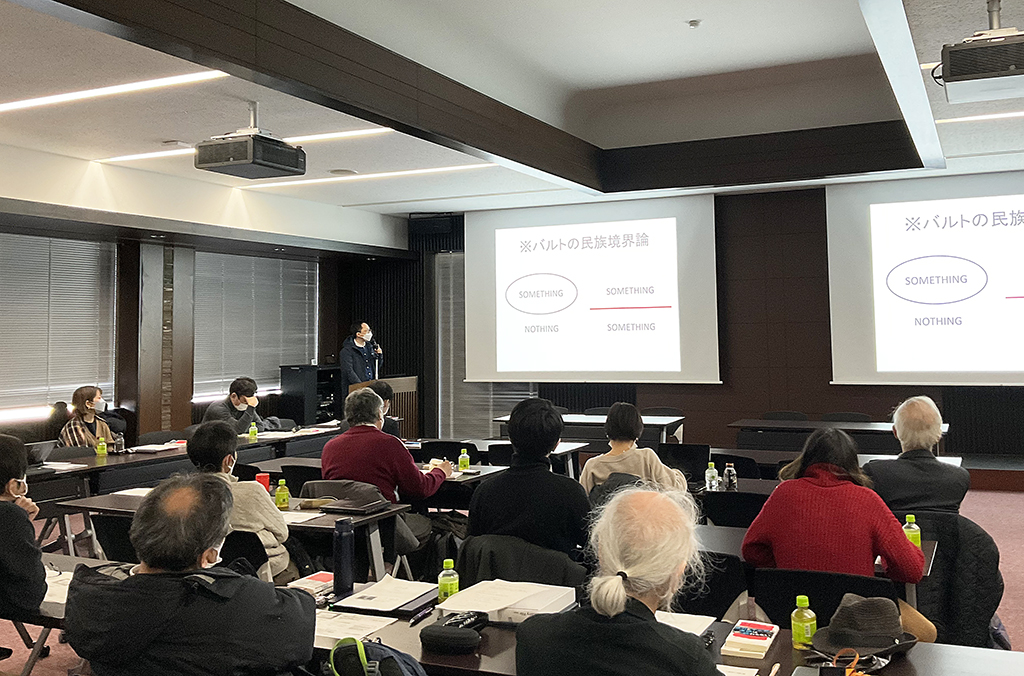
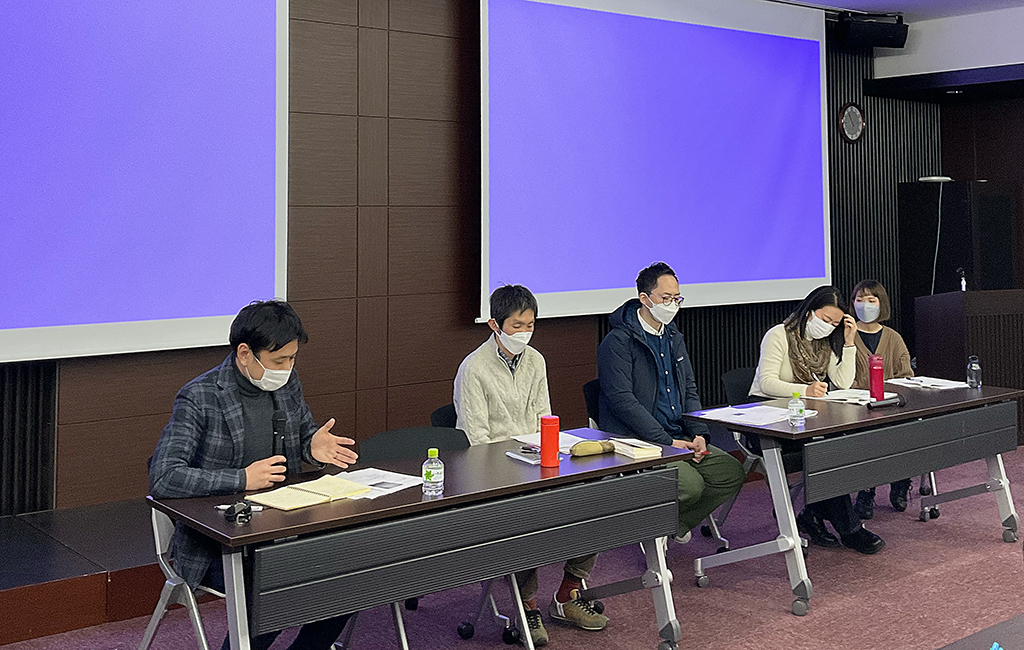
Postscript personal reflection
I assisted Dr. Nakanishi in organizing materials and preparing tables for his two books. Due to Covid-19, neither he nor I could travel for long periods of time, so it was a rare period when we could concentrate on our work. Whenever I received new material from him, we discussed together which information to keep and how to itemize it, and we worked through the process by trial and error. Immediately after finishing work on “Rohingya” Crisis, I received a job from the Institute of Developing Economies to prepare a list of Myanmar’s general election results. I delivered it on January 29. “Rohingya” Crisis had just been published and Dr. Nakanishi and I were overjoyed. But just three days later, on February 1, the military staged a coup. I was shocked. The election results I had worked so hard to compile were the very voice of Myanmar, but they were completely overturned and negated.
The most memorable part of working on Contemporary Myanmar Politics was making a list of those who died from the military attacks and repression of demonstrations since the coup. The list was organized in order of age: the youngest victim was one month old and the oldest was 90 years old. As I read each cause of death and the name of the place where they died, I cried and could no longer work on the list.
I am sure that while writing the books, Dr. Nakanishi also had moments when memories of Myanmar and the faces of his friends and acquaintances flashed through his mind, and it became difficult for him. For me, it was meaningful to share in the symposium discussion with the author, commentators, and participants amid the ongoing painful situation in Myanmar.
(February 3, 2023)
This article is also available in Japanese. »
「合評会:『ロヒンギャ危機─「民族浄化」の真相』『ミャンマー現代史』」
(川本佳苗)



